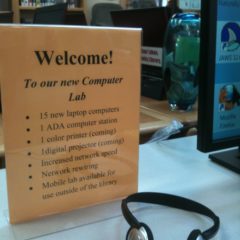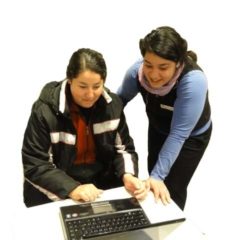This post was written by Sharon Morris, Director of Library Development for the Colorado State Library.
Throughout January 2020, we will be taking a look back at the 10s and Teens in Colorado libraries. Our series continues today with Computers, Technology, & Gadgets.
Computers, Technology, & Gadgets
- The 2010s saw libraries of all types going beyond offering traditional computer classes to offering one-on-one consulting between library staff and students, residents, and/or seniors. The individual needs for library users included learning basic computer skills, social media access, and navigating software and websites for employment, business development, and other economic development. Particularly those who had less computer skills and experience relied on library computers and staff to support them. In addition, library users continue to conduct e-services, including e-government in libraries as well as finding out how to use discovery tools for research and information (databases, digital literacy). Increases in e-content such as e-books, audio, and video will be discussed in a future blog.
- In 2010, over 7 million people used public library computers for internet use. That figure had dropped to 5.9 million in 2018 (preliminary data). At the same time, library user Wi-Fi access in public libraries (not offered ubiquitously in 2010) now accounts for 8.7 million uses annually in public libraries (and their parking lots). These numbers point to the shift in the 2010s from computers to more individually owned mobile devices for most people. However, we can’t discount that many residents still use library computers for research, social connection, and recreation.
- Now libraries, even in small communities, offer technology support, laptops and Wi-Fi hubs for checkout, and other ways for people to stay connected. It’s common to see people parked outside the library after-hours in order to use the library’s Wi-Fi. While the mobile revolution has taken over and many more people are using technology on tablets and smart phones, Colorado libraries still serve those who are in need of access. The digital divide continues, primarily with those who still need skills and help, for example, navigating e-government, understanding privacy issues, and having broadband access via the library because it may not be available to them otherwise.
- Across the state, Colorado libraries are participating in the cooperative use of technology to expand access to their physical collections based on ever increasing demand.
- It’s hard to remember how fractured the Colorado library catalogs were in 2009 because libraries share so seamlessly now. Since 2010, major strides were made to link library catalogs, such as Marmot’s to the Colorado Alliance of Research Libraries’ Prospector Service. On top of that, AspenCat was launched by the Colorado Library Consortium, allowing new opportunities for Colorado’s smallest libraries to build a strong and diverse shared collection. These interconnections allow library users from throughout Colorado to order and receive more materials than their local libraries can own. It’s remarkably popular, and shipping via courier among libraries has skyrocketed over the decade to over 2.6 million items annually.
Latest posts by Marisa Wood (see all)



